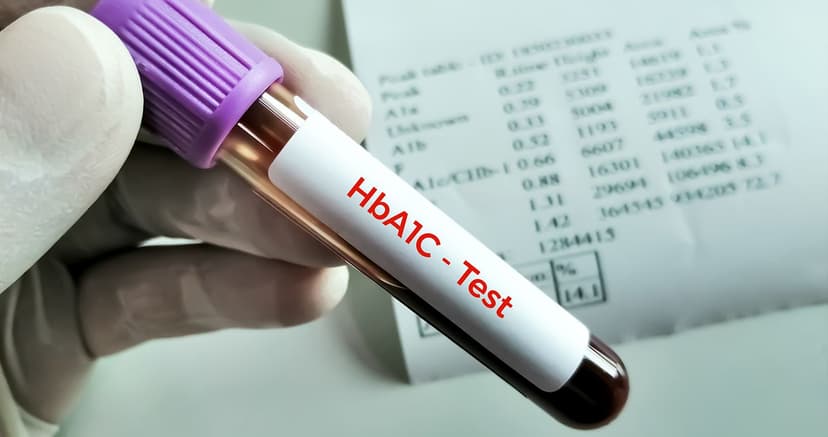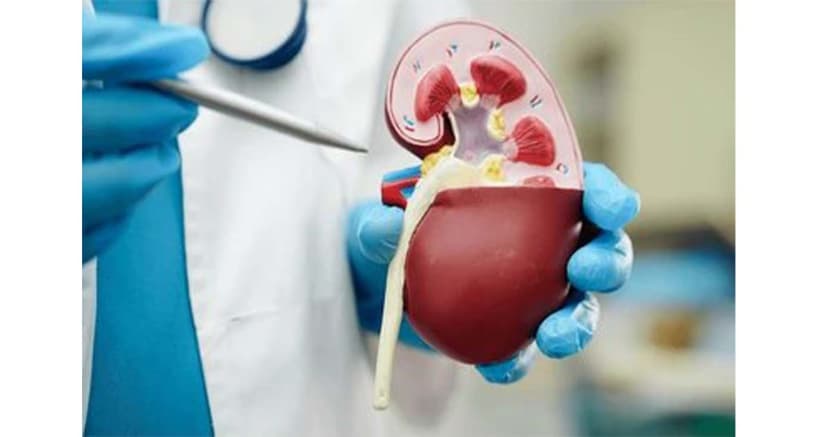Understanding Blood Sugar Levels: What Do They Mean and How to Control Them
By:

Apex Hospitals
04-08-2024

Glucose is a sugar that provides energy to the body's cells. The body converts various carbohydrates into glucose and stores any excess glucose that isn't immediately needed.
Blood sugar levels, also called blood glucose levels, indicate the glucose concentration in your bloodstream. These levels fluctuate throughout the day, and for people with diabetes, these fluctuations are more significant and frequent compared to those without diabetes. Maintaining a proper glucose balance is essential; the body needs enough glucose to fuel its cells, but not so much that it leads to consistently high blood levels. Monitoring blood glucose offers valuable insights into the current amount of sugar in the blood.
Regulation of Blood Glucose
The regulation of glucose in the body occurs automatically and continuously every minute of the day. To meet the body's energy needs, blood glucose (BG) levels should ideally remain between 60 and 140 mg/dL. While brain cells can absorb glucose without insulin, maintaining normal glucose levels is still crucial. Insufficient glucose, known as hypoglycaemia, deprives cells of energy, while excessive glucose, or hyperglycaemia, can damage cellular function. The optimal state, known as euglycemia, is when blood sugar levels are within the normal range, supporting the body's proper functioning. Achieving this balance requires the coordinated action of hormones from the pancreas, intestines, brain, and adrenal glands. Insulin, a hormone your pancreas produces, is crucial in regulating and maintaining healthy blood sugar levels.
What is considered a healthy blood sugar level?
The National Institute of Diabetes and Digestive and Kidney Diseases (NIDDK) recommends a healthy fasting blood sugar level below 99 milligrams per deciliter (mg/dL).
For those with diabetes, blood sugar levels fluctuate more frequently, and the goal is to maintain these levels within a healthy range rather than aiming for a specific number.
Blood glucose naturally fluctuates throughout the day, typically rising after meals and stabilizing within an hour. The lowest levels are usually observed before the first meal of the day. People with diabetes aim for blood glucose levels between 80 and 130 mg/dL before meals, with levels below 180 mg/dL within two hours after eating.
What are high blood sugar levels?
High blood glucose levels, also known as hyperglycaemia, occur when the glucose concentration in the blood is higher than the normal range. This typically means a blood sugar level above 140 milligrams per deciliter (mg/dL) after eating or above 180 mg/dL two hours after a meal. In people with diabetes, high blood glucose levels may be defined as fasting blood sugar levels above 125 mg/dL or 180 mg/dL two hours after eating.
Hyperglycaemia can result from various factors, including insufficient insulin production, improper insulin use, high carbohydrate intake, illness, or stress. When the body doesn't produce enough insulin to manage glucose levels or cells become less responsive to insulin, glucose can accumulate in the blood. Over time, this can lead to the development of type 2 diabetes.
Other factors that can contribute to high glucose levels include:
1. Endocrine Disorders: Conditions like Cushing’s syndrome
2. Medications: Certain drugs, including corticosteroids, phenytoin, and oestrogen
3. Pancreatic Damage: Injury or disease affecting the pancreas
4. Intravenous Nutrition: Nutritional support administered through an IV
5. Gestational Diabetes: Diabetes that occurs during pregnancy
Symptoms of hyperglycaemia, or high blood glucose levels, can vary in severity but commonly include:
- Frequent Urination
- Excessive Thirst
- Fatigue
- Blurred Vision
- Headaches
- Nausea and Vomiting
- Unexplained Weight Loss
- Dry Mouth and Skin
- Slow-Healing Wounds
If hyperglycaemia leads to diabetes, it can cause severe complications due to damage to nerves, blood vessels, and organs. These complications may include:
- Vision Loss: Ey damage can result in impaired or lost vision.
- Kidney Disease: Progressive kidney damage that may eventually lead to kidney failure.
- Foot Ulcers: Persistent sores or infections on the feet that are difficult to heal.
- Nerve Damage: Long-term nerve damage causing numbness, tingling, or pain, known as neuropathy.
- Slow Wound Healing: Difficulty in healing cuts or sores.
- Increased Risk of Cardiovascular Events: Higher likelihood of heart attack or stroke due to damage to blood vessels and increased cardiovascular risk.
What are low blood sugar levels?
Low blood sugar levels, also known as hypoglycaemia, occur when the glucose concentration in the blood falls below normal. Generally, blood sugar levels below 70 milligrams per deciliter (mg/dL) are considered low.
Causes of Hypoglycaemia:
- Medication: Excessive use of insulin or other glucose-lowering medications, particularly in people with diabetes.
- Skipping Meals: Not eating regularly or missing a meal.
- Excessive Alcohol Consumption: Drinking alcohol without adequate food intake.
- Intense Exercise: Vigorous physical activity without adjusting food intake or medication.
- Medical Conditions: Certain health conditions that affect glucose regulation, such as adrenal insufficiency or severe liver disease.
Symptoms of Hypoglycaemia:
- Feeling jittery or trembling.
- Excessive sweating
- Difficulty concentrating or mood swings.
- Dizziness or Light-headedness
- Increased heart rate.
- Strong, sudden feelings of hunger.
- Blurred Vision
Severe hypoglycaemia can lead to unconsciousness or seizures and requires prompt treatment to restore normal blood glucose levels.
The Glycaemic index (GI) and blood glucose
The Glycaemic Index (GI) is a measure that ranks carbohydrate-containing foods based on how quickly they raise blood glucose levels. Foods are assigned a GI score on a scale from 0 to 100, with higher scores indicating a faster increase in blood sugar. Here’s how it relates to blood glucose:
1. High-GI foods cause a rapid spike in blood glucose levels. Examples include white bread, sugary drinks, and pastries. These foods are quickly digested and absorbed, leading to a swift rise in blood sugar.
2. Medium-GI Foods have a moderate effect on blood glucose levels. Examples include whole-grain bread, brown rice, and some fruits. They cause a more gradual increase in blood sugar compared to high-GI foods.
3. Low GI Foods: These foods lead to a slower and more gradual rise in blood glucose. Examples include legumes, non-starchy vegetables, and most fruits. They are digested and absorbed more slowly, helping to maintain stable blood sugar levels.
Impact on Blood Glucose Management:
- Blood Sugar Control: Choosing low GI foods can help manage blood glucose levels more effectively, particularly beneficial for people with diabetes or those aiming to maintain steady energy levels.
- Satiety: Low GI foods can also promote feelings of fullness and reduce overall calorie intake, which may assist in weight management.
A balanced mix of low—to medium-GI foods can improve blood glucose control and overall health.
Tips to manage blood sugar level
To manage blood sugar levels, follow these key steps:
1. Choose foods with low Glycaemic Index (GI) and high fibre content, and monitor portion sizes.
2. Engage in at least 150 minutes of moderate exercise per week.
3. Regularly check your levels and track patterns.
4. Drink plenty of water.
5. Use techniques like meditation or deep breathing.
6. Aim for 7-9 hours of quality sleep each night.
7. Adhere to prescribed treatments and consult your healthcare provider regularly.
For optimal health, individuals should aim for fasting blood glucose levels below 99 mg/dL. Persistent high or low blood sugar can lead to severe complications. To maintain healthy blood glucose levels, focus on consuming moderate carbohydrates, prioritizing complex carbohydrates over simple ones. Regular exercise, balanced meals, sufficient sleep, and weight management are also crucial. Regular monitoring of blood sugar levels helps ensure they stay within a healthy range. Anyone experiencing symptoms of abnormal blood sugar, regardless of whether they have diabetes, should consult a doctor.
FAQS
Related Articles
Connect With Us
Health In A Snap, Just One App.
KNOW MORE






























































































































































